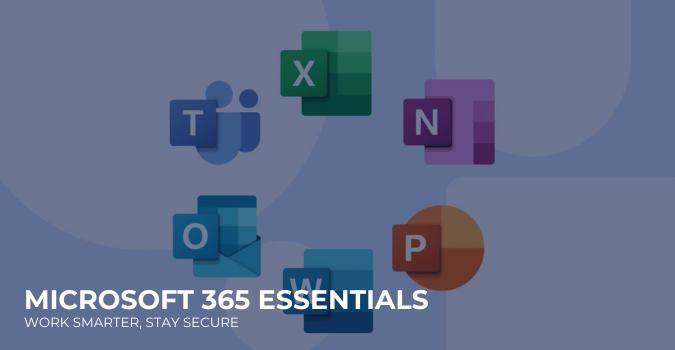Microsoft Office 365 (M365) empowers organisations with a suite of cloud-based productivity tools. However, like any online platform, Office 365 requires robust security measures to protect sensitive data and prevent cyber threats. As we navigate 2024’s evolving cyber landscape, here are some best practices to bolster your Microsoft Office 365 Security.
Implement Multi-Factor Authentication (MFA)
Multi-factor authentication is a security process that requires users to provide two or more forms of authentication to access their accounts. This adds an extra layer of security to prevent unauthorized access to sensitive data. Microsoft Office 365 supports MFA, and it’s essential to implement it for all users in your organisation.
Use Azure Active Directory (AAD)
Azure Active Directory (AAD) is a cloud-based identity and access management solution that provides a centralised and secure way to manage access to applications, resources, and data. By integrating AAD with Office 365, you can enable secure single sign-on (SSO) access to Office 365 apps, as well as other cloud apps.
Enable Encryption
Encryption is a critical security feature that helps protect data from unauthorised access. Microsoft Office 365 Security provides encryption for emails, documents, and other data. Make sure to enable encryption for all sensitive data, such as financial reports, personal identifiable information, and confidential business data.
Use Microsoft Secure Score
Microsoft Secure Score is a tool that helps organisations assess and improve their security posture. It provides a comprehensive view of an organisation’s security settings and suggests improvements to enhance security. Regularly reviewing Secure Score and implementing its recommendations can significantly improve the security of your Office 365 environment.
Implement Data Loss Prevention (DLP) Policies
Data Loss Prevention (DLP) policies help protect sensitive data from unauthorized access, accidental disclosure, or malicious attacks. Office 365 provides DLP policies that can help detect and protect sensitive data, such as credit card numbers, social security numbers, or confidential business information.
Use Compliance and Retention Policies
Compliance and retention policies help ensure that sensitive data is retained or disposed of according to regulatory requirements or business needs. Office 365 provides features like retention labels, retention policies, and disposal policies that can help automate the process of retaining or disposing of sensitive data.
Monitor and Audit
Regular monitoring and auditing are critical to identifying and responding to security threats. Microsoft Office 365 Security provides advanced threat protection, which includes features like alerts, reporting, and auditing. Regularly reviewing these reports can help identify potential security threats and take corrective action.
Use Privileged Access Management
Privileged Access Management (PAM) is a feature that helps manage and monitor privileged access to sensitive data. PAM provides features like approval workflows, condition policies, and access reviews that can help ensure that privileged access is granted only to authorised users.
Implement Security Policies
Security policies are essential to ensuring that users understand their roles and responsibilities in protecting sensitive data. Develop and implement security policies that cover topics like password management, incident response, and data protection. Provide regular training to employees to ensure they understand the policies and procedures.
Regularly Update and Patch
Regularly updating and patching Office 365 apps and operating systems is critical to ensuring that any known vulnerabilities are addressed. Enable automatic updates and patching to ensure that your organisation’s data is protected from known threats.
Summary
In conclusion, securing Microsoft Office 365 Security requires a multi-layered approach that includes implementing multi-factor authentication, using Azure Active Directory, enabling encryption, and regularly monitoring and auditing. By following these best practices, organisations can help protect their sensitive data from unauthorized access and ensure compliance with regulatory requirements.
Partner with Computer Support Professionals:
Maintaining robust Microsoft Office 365 Security requires ongoing vigilance and expertise. Consider partnering with experienced Computer Support Professional specialising in Microsoft Office 365 Consulting Services for Australian Businesses. We can provide invaluable guidance on implementing best practices, monitoring your environment, and responding to security incidents effectively.
Also Read:




